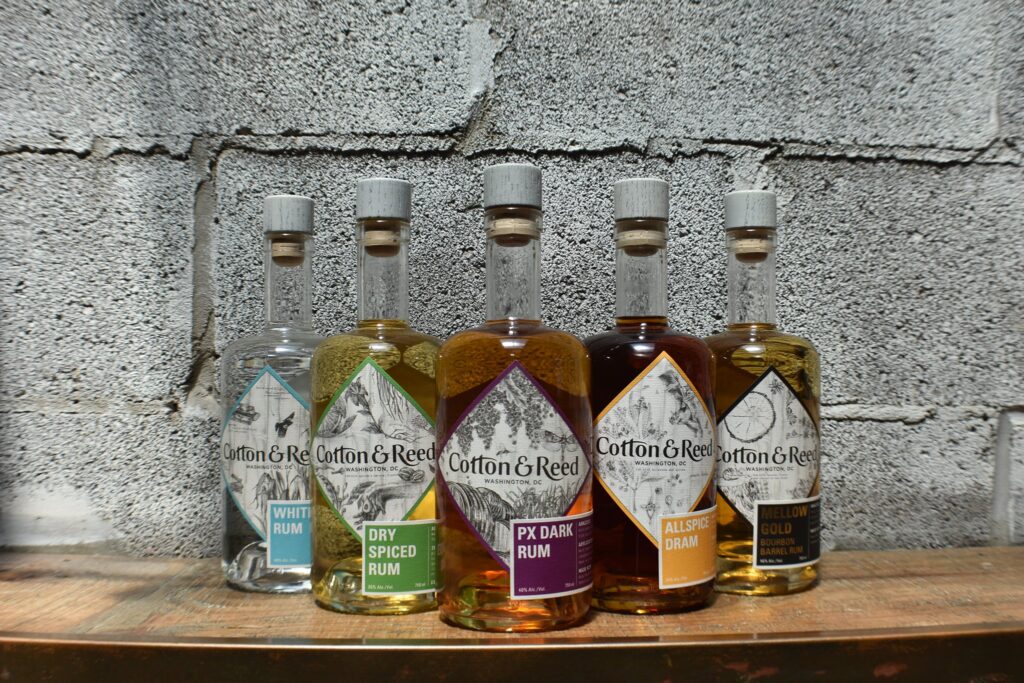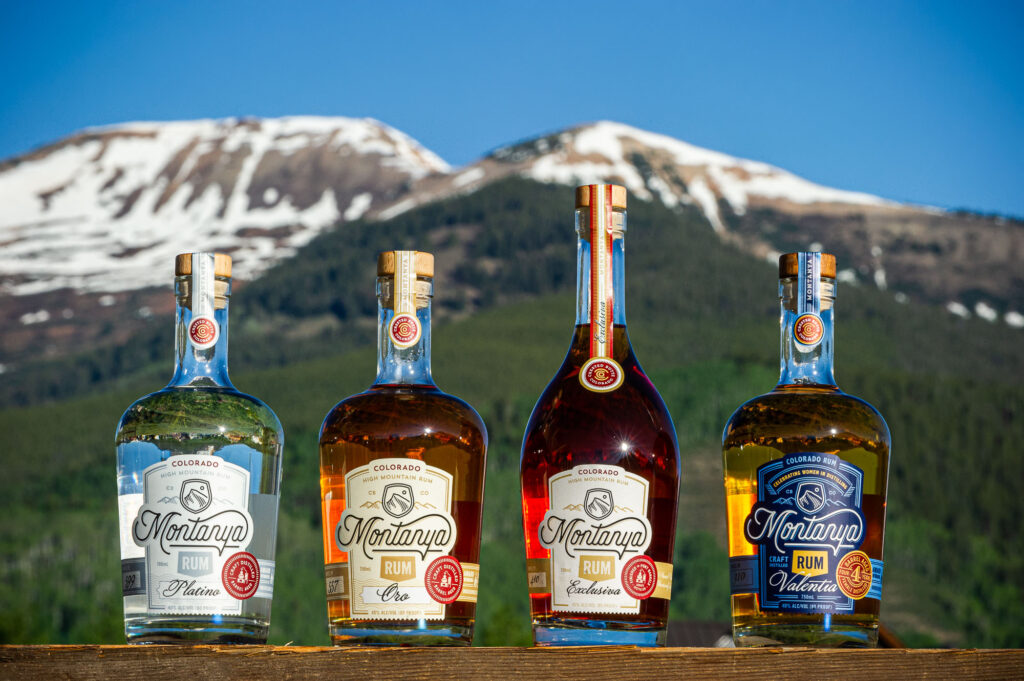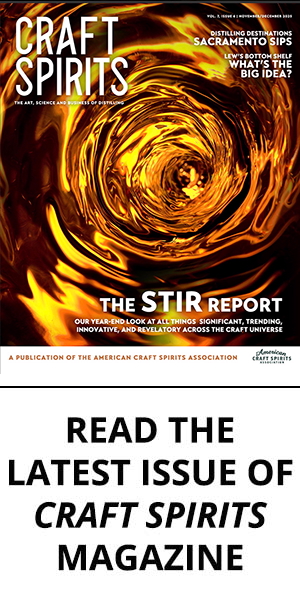
Editor’s Note: This article first appeared in the November 2020 issue of CRAFT SPIRITS magazine.
“How come we never have these discussions about gin?”
It’s an interesting—albeit rhetorical—question that Privateer Rum president and head distiller Maggie Campbell raises as we ponder sustainability and social-consciousness issues within the rum space.
And she has a point. If you dig deep enough, you’ll find that virtually every spirits category has some degree of socially problematic origin story or an environmental history that’s less than ideal. But such conversations seem to be more prevalent within the realm of sugar cane-based distilling. At least part of the reason for that, Campbell contends, is that the modern rum industry is still very much a part of the regions—particularly in the Caribbean—whose resources and peoples had historically been exploited. “It’s very visible in rum because it’s still made there,” Campbell says. “[But with gin], are you kidding me, it’s colonialism in a glass—it’s enslaved spice labor. Nobody ever asks where the spices in our gin are from.”
But the traditional point of production for gin is quite removed from the ingredient sourcing location.
“[There’s] that separation because we think of gin as British, it whitewashes away the reality of what’s in the glass,” Campbell says. “Rum is still made in the Caribbean and I think that’s why it’s more apparent—which is good because we talk about it and we deal with it to a degree that is so much more intelligent, thoughtful and engaged than any other spirits I’ve ever had a toe in, including whiskey and gin.”
Sustainable sourcing, overall environmental impact, ethical industry practices and socioeconomic issues, therefore, have long been a part of the conversation within the rum space, perhaps longer than it has in other categories.
On the eco-impact side, the land required to grow cane and the fuel required to create the heat needed to convert raw sugar cane into a fermentable medium often are cited as key concerns.
“Harvesting sugar cane is still largely a manual operation, unlike the harvesting of wheat and other grains used in other spirits,” says Chris Budzik, a market analyst at IWSR. “Another contributing factor is that a significant amount of the world’s rum is produced in less developed countries with lax environmental regulations.”
Oil is still the dominant fuel used in Caribbean distilleries, which compounds issues of sustainability.
“Most of the boilers I have seen in person [there] run on oil,” notes Campbell. “And a lot of the waste is not accounted for the way it is here.”
However, she cautions, North Americans have the luxury of having a much different concept of sustainability than those in many traditional rum-producing regions.
“When you’ve been oppressed for so long, trying to bring systems like that online is really hard,” Campbell offers.
But producers in regions that have greater access to greener fuels and systems—particularly U.S. craft distilleries—should be exploring more sustainability opportunities as much as they can. The boiler at Ipswich, Massachusetts-based Privateer, for instance, runs on natural gas. “I’m trying to always be cleaner,” Campbell says.
Environmental stewardship and social responsibility have always been in the DNA of Montanya Distillers in Crested Butte, Colorado. The Certified B Corporation is 100% wind-powered and it offsets its carbon production. It also uses a bottle supplier that’s certified Cradle to Cradle, a globally recognized standard that measures products based on material health, material reuse, renewable energy and carbon management, water stewardship and social fairness. Montanya also actively promotes diversity and social justice.
“For me, I’ve always been motivated not so much by having a good marketing tale to tell or a good differentiating element, but more because it’s part of my own personal commitments,” says Montanya founder and owner Karen Hoskin. “It lets me go to work and sleep at night.”
More important than storytelling is truth telling, Hoskin asserts. And that means being transparent even when the news isn’t always good.
“We set a goal in 2018 to be zero waste by 2020 and we have not made it and we have talked about that publicly, why that has been hard, what pieces of the puzzle we failed on and what we do instead,” Hoskin says. “So, okay, plastic was a big challenge for us in bars and restaurants, so we’re pivoting toward working with a plastic offsetting partner. If we can get rid of our own plastic, then we can work with partners getting rid of plastic, kind of like what we do with carbon.”
Still, the distillery has managed to reduce its landfill-bound waste by 75% and the waste generated at brand education events by 100%. And, Montanya reported that it offset 55 metric tons of carbon emissions in 2018.
But it’s really the sourcing of raw materials that sets rum apart from other spirits categories, especially when the conversation is about sustainability.
“Part of the issue is that sugar is this really faceless commodity bought and sold on this global market and very few people have any awareness of, so [sugar suppliers] can get away with it very easily,” notes Campbell. “I think the average American has absolutely no idea how the sugar market works, where sugar comes from and honestly could not find out where the sugar in a bag in their house comes from. And it could come from 80 different countries in one bag.”

Privateer is fortunate enough to be able to source a single-origin molasses—in this case, from a supplier in Guatemala—which is a rare position to be in within the distilling industry. “A lot of molasses, for the most volume of rum made, can be from anywhere, it changes all the time,” Campbell says. “They’re buying in bulk on the global commodities market—they’re not buying from a farm, so they can’t even tell you what the mill’s policy is. They’re very, very divided from the farm, from the
cutter and from the miller.”
Campbell is also very conscious of what kind of impact Privateer’s suppliers have on their own communities. Where sugar cane comes from, where it’s processed and where its waste goes should be top of mind for rum producers, she says. “And,” she asks, “does it sustain the local communities there in a meaningful and helpful way or is it extractive of the communities there? Are [the companies] extracting from the local communities to build their own personal wealth?”
Privateer’s sugar supplier, Campbell notes, is very active with providing food security for not only its workers, but for the entire village in which it operates.
Montanya sources 100% family-grown, non-GMO cane from a co-op of cane growers within a 50-mile region in Louisiana, near Lake Pontchartrain. When it’s harvested in the fall, it travels only a few miles to the Lula-Westfield sugar mill in Belle Rose, Louisiana, where it’s pressed and turned into unrefined sugar and molasses. From there, the unrefined sugar and molasses head, in separate 1-ton totes, directly to Montanya. The raw materials never see a refinery or enter the commodity market. Hoskin and her team know everyone in the chain of custody, from the land owners to the growers, to the harvesters to the millers.
Those distillers, like Montanya, that source their cane from within the United States are obviously limited to very few regional options. It’s not like grain, which can pretty much grow in most North American climates. And even in the areas where cane can grow, some states are more conducive to responsible trade practices than others. Louisiana is definitely one of the former.
“We are a very ingredient-focused rum distillery and when I think ‘sustainable sourcing,’ I think labor practices and carbon footprint,” says Reed Walker, co-founder and CEO of Cotton & Reed in Washington, D.C. “In the world of rum production, and specifically sugar cane harvesting, there are a lot of issues with very poor working conditions. We see it all over the world, including the Caribbean, Central America and even Florida. This is something that we dug into and as a result, opted to source the majority of our molasses from Louisiana.”

Walker notes that much of the cane harvesting in Louisiana is performed mechanically, so there isn’t as much of a need for low-wage labor to do it manually.
Outside the U.S., there are also stark contrasts from country to country. Walker points to Nicaragua and Costa Rica—two Central American nations that are physically located adjacent to each other, but economically and politically, they’re many miles apart. “Costa Rica has a slightly better, stronger, mechanized economy and better labor [practices] and minimum wage laws that are enforced. Political stability makes a big difference.”
Across the Pacific, Hawaii once had a vast, thriving sugar industry, with a commercial legacy of about a century and a half, long predating the archipelago’s entry into the U.S. as the 50th state. Bob Gunter worked in the sugar business there for many years before he launched Koloa Rum Co., the first licensed distillery on the island of Kauai, in 2009. The fact that the local cane industry “holds a place in my heart,” Gunter says, is one of the things that motivated him to become a rum producer.
“[Sugar] was a huge industry and a very important industry in Hawaii for 150 years,” notes Gunter. “In terms of the demographics that we have here today, it’s what made Hawaii what it is today, which is this rainbow of different ethnicities and cultures. They all came at different points in time to work in and sustain the sugar industry. Obviously it provided employment, it provided for the well-being directly and indirectly for the majority of people in Hawaii, vis-à-vis company stores and medical clinics.”
Though the sugar industry was, as Gunter says, “the heartbeat of Hawaii” for generations—not only in terms of growing and processing cane—it became nearly impossible for Hawaiian sugar companies to compete on the global commodities market, especially when many of the competing regions paid low wages and offered no benefits for their workers. And tourism eventually became a much more lucrative industry for Hawaii, so the reliance on sugar diminished significantly. There was also a major effort among plantation owners to diversify their crops beyond cane to try to remain profitable, but that, too, proved difficult.
“Eventually we saw that there would be no agricultural industry here to speak of that would sustain a lot of people,” Gunter recalls. “As an employment opportunity sugar and agriculture in general began to disappear. So some of us were not happy with that and we wanted to do whatever we could to support our agriculture industry and, in doing so, preserve open space and important agricultural land.”
His goal when launching Koloa was to support the local cane industry by consuming as much sugar and sugar derivatives as possible. But 11 years later, there’s not enough of an industry to speak of to fully supply Hawaiian rum producers with enough raw materials to operate. “So now we’re forced to bring it in from the mainland by the container load,” Gunter notes. It’s a reality for most products—food, agricultural or otherwise—consumed by the population of an archipelago that’s nearly 2,500 miles from the continental portion of its own country and nearly 2,000 miles from any other continent. Roughly 90% of such products come from outside Hawaii, which not only makes the cost of goods much more expensive, but does a number on any industry’s carbon footprint.
But for the past four years, Koloa has been working on its own cane cultivation project, supplementing the supply it gets from the mainland with crops the distillery grows itself. The plan is for Koloa to become totally self-sufficient—depending only on the cane grown on its farm. Gunter estimates that that would require between 250-300 acres of Koloa’s own crop. Right now, the farm is growing about 18 acres’ worth, so there’s still a considerable way to go. But what it is growing is 100% certified organic. “Everyone here, to a large extent, is very careful about how they use the land,” Gunter says. “There’s a saying in Hawaii: ‘Mālama ʻĀina: Take care of the lands.’ The ancient Hawaiians were completely self-sustaining. They existed on what they could produce and catch from the ocean.”
Now, getting the rest of the country and the rest of the world to make “Mālama ʻĀina” part of their everyday ethos is really the key to a sustainable future in rum—and in every industry. Taking care of the lands—and, by extension, the people—is something few should be opposed to, though there are still so many minds left to change. But the leaders in the craft rum segment know it can be done. Just ask Montanya’s Hoskin. Her team this year managed to get retail behemoth Whole Foods to rethink its adult beverage business.

“One of the things that I had been doing was trying to convince Whole Foods that they can’t have a separate philosophy about alcohol from the philosophy they have about food,” Hoskin reveals. “Alcohol should reflect a commitment to non-GMO, proper-supply-chain spirits companies. And they said, ‘You’re right,’ so we got a major deal with Whole Foods that started in September.”
Twenty-five Whole Foods locations in the states of Washington, California, Colorado, Arizona and Nevada are now carrying Montanya’s Platino and Exclusiva rums.
And for those who still argue that taking a stand on environmental stewardship and socially conscious business practices is too costly an endeavor, it certainly hasn’t hurt Montanya’s growth prospects. So far in 2020—a year that’s been incredibly challenging for everyone in the business—Montanya has grown its wholesale sales by 44%. Hoskin expects the Whole Foods deal to drive the company’s end-of-year sales even farther.
Distillers like Hoskin, Privateer’s Campbell, Cotton & Reed’s Walker and Koloa’s Gunter succeed because they look well beyond public relations when living up to their respective philosophies on sustainability.
“There’s what is ‘SustainableTM’ for marketing and sustainable [in terms of] what-is-actually-helpful,” Campbell says. “Switching your boiler to natural gas from oil would be huge, but you’re going to go to an American bartender and bragging that you spent, like, a million dollars to put your boiler on natural gas and that’s not very sexy with them.”
Something perceived as more “sexy” would be putting in a windmill or putting in a solar panel—even though neither would generate the same level of earth-friendly benefits. “Was that actually the best environmental impact or was it the most marketable impact?” Campbell explains. “Is it boardroom sustainability or is it on-the-ground sustainability?”


